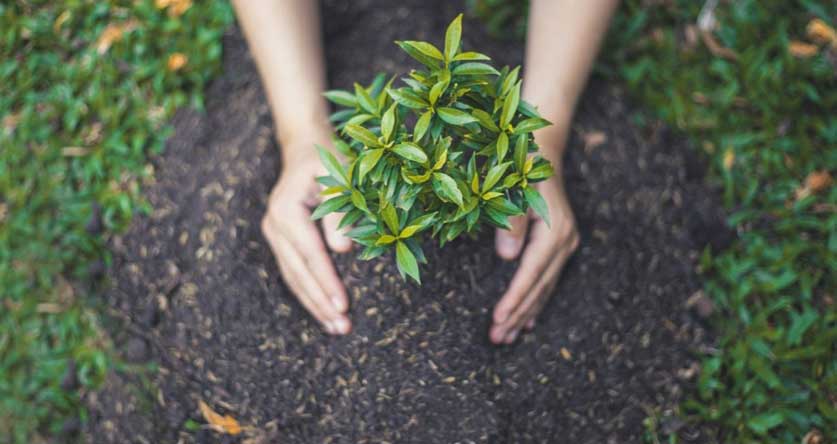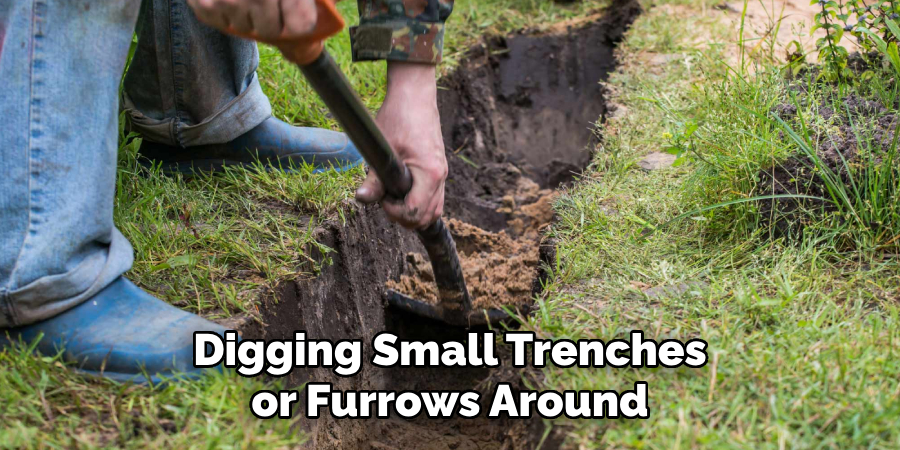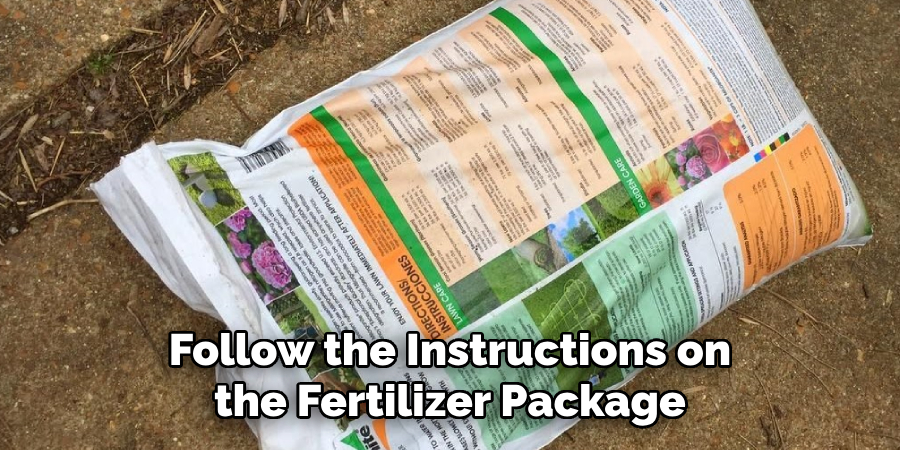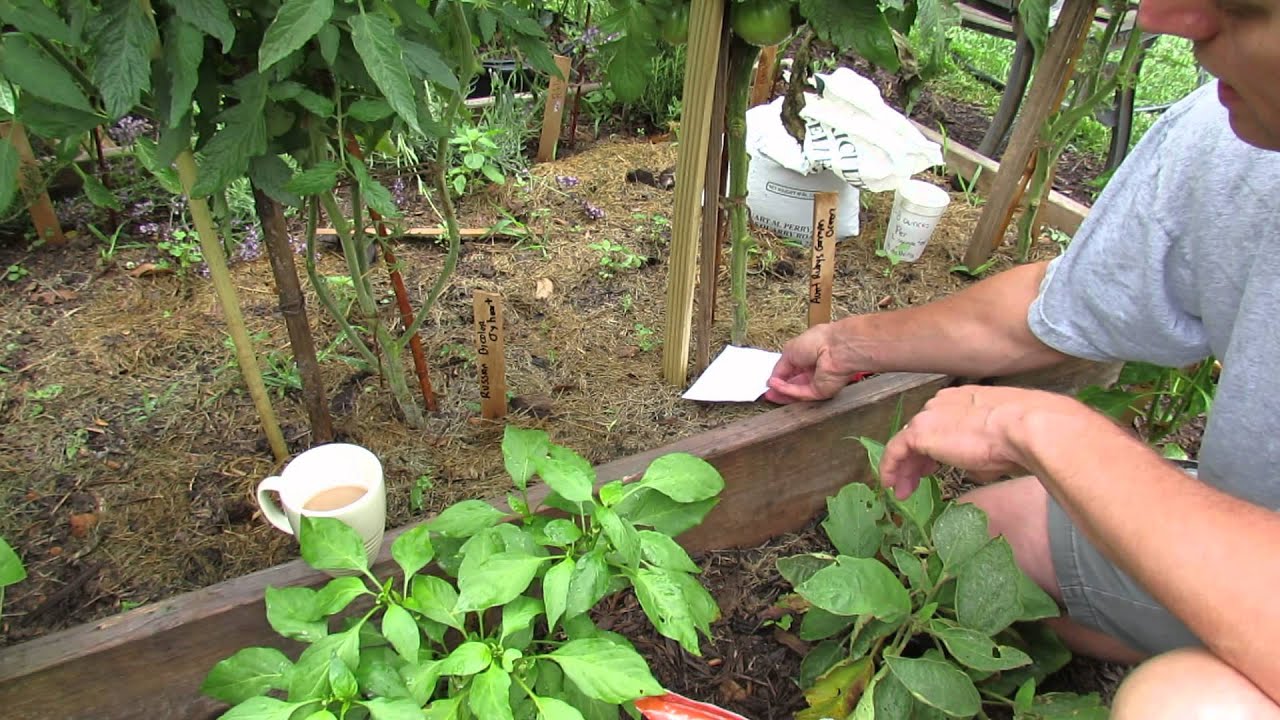To side dress plants, simply apply fertilizer around the base of the plant, avoiding direct contact with the stems or leaves. Side dressing provides additional nutrients to encourage healthy growth and productivity.
Boosting the growth and well-being of your plants is crucial for a successful garden. While regular watering and adequate sunlight are essential, side dressing plants with fertilizer can provide the extra nutrition they need to thrive. Side dressing involves applying fertilizer alongside the plants, ensuring they receive the necessary nutrients for optimal growth and productivity.
This technique is particularly beneficial for vegetables, fruits, and plants in need of an additional boost during their growing season. We will explore the importance of side dressing, when and how it should be done, and the recommended types of fertilizer to use. By following these tips, you can ensure your plants are getting the nutrients they require for healthy and vigorous development.

Credit: helpmecompost.com
What Is Side Dressing?
Side dressing is an essential practice that aids in the growth and development of plants. It involves applying fertilizer or organic matter around the base of plants to provide additional nutrients. This helps plants to flourish and produce healthier foliage, abundant flowers, and bountiful harvests.
The primary goal of side dressing is to supplement the existing soil fertility and ensure optimal plant nutrition. By directly applying fertilizer to the root zone, plants can utilize these nutrients efficiently. Side dressing is particularly crucial during the active growth phase of plants, such as when they start to flower or when fruits are developing.
It helps to prevent nutrient deficiencies and promotes overall plant health. Including side dressing as a regular maintenance practice in your gardening routine can significantly enhance the productivity and vitality of your plants.
When To Side Dress Plants?
Side dressing plants is a crucial gardening practice that should be done at the appropriate time. The signs that indicate plants need side dressing include stunted growth, pale leaves, and low fruit or flower production. To ensure optimal results, it is important to side dress plants during the best time of year, which can vary depending on the specific plant and its growing season.
By following this guideline, you can provide your plants with the necessary nutrients they need to thrive and avoid any potential deficiencies. Remember to observe your plants closely and look for these signs to determine when it is necessary to side dress them.
With proper timing and attention to your plants’ needs, you can ensure their healthy growth and maximize your gardening efforts.
How To Side Dress Plants?
Side dressing plants is an essential practice in ensuring their optimal growth. Before starting, it is crucial to prepare adequately. Begin by testing the soil ph and nutrient levels to determine the plants’ requirements. Additionally, gather all the necessary materials for side dressing, such as fertilizer and tools.
Once prepared, follow the step-by-step process. Identify the appropriate side dressing material for your plants and calculate the correct amount of fertilizer needed. Apply the side dressing evenly around the plants, making sure to mix it gently into the soil.
Afterward, remember to water the plants thoroughly. To ensure effective side dressing, avoid overfertilizing and monitor the plant’s growth and health. Adjust the frequency of side dressing based on the plants’ needs and always be vigilant in maintaining their well-being.
How to Side Dress Plants: Step by Step Guide
Benefits Of Side Dressing Plants
Side dressing plants offers numerous benefits for enhanced growth and health. By applying fertilizer alongside the plants, nutrient availability is improved. This ensures that the plants receive the necessary nutrients for optimal development. Side dressing also helps prevent nutrient deficiencies, which can lead to stunted growth and various plant diseases.
It provides an efficient way of replenishing nutrients that may have been depleted from the soil over time. This practice contributes to overall plant vigor and vitality, promoting robust growth and a vibrant appearance. Side dressing can be particularly beneficial during critical growth stages, such as blooming or fruiting, when plants require extra nourishment.
Incorporating side dressing into your plant care routine can significantly enhance the health and productivity of your plants.
Side Dressing Vs. Other Fertilization Methods
Side dressing is a popular fertilization method that offers several advantages over other techniques. Compared to top dressing and broadcasting, side dressing allows for targeted application of nutrients directly to the plant’s root zone, maximizing absorption. This method minimizes nutrient runoff and wastage, making it more efficient and cost-effective.
Additionally, side dressing provides a slow-release of nutrients, ensuring a steady supply to the plant throughout its growth cycle. However, it does require more labor than top dressing or broadcasting, as it involves digging small trenches or furrows around the base of the plant.

Despite this drawback, the precise placement and controlled release of nutrients make side dressing a preferred choice for many gardeners and farmers. It promotes healthy plant growth, reduces the risk of nutrient imbalances, and ultimately leads to higher yields.
Side Dressing For Different Types Of Plants
Side dressing is an essential practice for different types of plants. Flowers and ornamentals benefit from side dressing, which involves adding fertilizers around their base. This helps improve their overall health and promotes better blooms. Vegetables and fruits also greatly benefit from side dressing, as it provides them with the necessary nutrients for optimal growth and higher yields.
When it comes to trees and shrubs, side dressing is crucial during their initial growth stages to support their root development and overall vitality. The process of side dressing involves applying organic matter or fertilizer to the soil surface, then gently incorporating it into the top layers.
This ensures that plants receive the nutrients they need directly at the root zone. Incorporating side dressing into your gardening routine will help you achieve healthier, more productive plants.
Common Mistakes To Avoid In Side Dressing
Side dressing plants is an important technique for providing supplemental nutrients during their growing season. However, there are common mistakes that should be avoided in this process to ensure optimal plant health. Over application of fertilizer can lead to nutrient burn and damage to the plants.
Timing is crucial when it comes to side dressing, and applying fertilizer too early or too late can be ineffective. Another mistake to avoid is using the wrong type of fertilizer for your specific plants, as different plants have different nutrient requirements.
By being mindful of these common mistakes, you can successfully side dress your plants and help them thrive.
Faq
Side dressing plants in containers is a common practice that can promote healthy growth. While organic fertilizer is suitable, it is important to choose a blend specifically designed for container plants. The frequency of side dressing will depend on the specific needs of the plants, but generally it is recommended to do so once every four to six weeks during the growing season.
However, side dressing should not be done in winter, as the plants are dormant and do not require additional nutrients. By following these guidelines, you can ensure that your container plants receive the necessary nutrients for optimal growth and development.
Frequently Asked Questions Of How To Side Dress Plants
How Often Should I Side Dress My Plants?

Side dress your plants every 4 to 6 weeks during the growing season to provide them with a steady supply of nutrients. You can also monitor the plant’s growth and adjust the frequency if needed. Remember to follow the instructions on the fertilizer package for specific guidelines.
What Is The Best Fertilizer For Side Dressing Plants?
A well-balanced, slow-release fertilizer with a higher nitrogen content works best for side dressing plants. Look for fertilizers that have an n-p-k ratio of around 10-10-10 or 14-14-14. These will provide the necessary nutrients for healthy plant growth and development.
How Do I Side Dress Plants Properly?
To side dress plants, start by creating a shallow trench around the base of the plants, ensuring it is 4 to 6 inches away from the stem. Sprinkle the fertilizer in the trench, then lightly mix it into the top inch of soil.
Water thoroughly to help the plants absorb the nutrients.
Can I Side Dress Plants With Compost?
Yes, you can side dress plants with compost. Compost is an excellent organic fertilizer that provides a slow-release of nutrients. Apply a thin layer of compost around the base of the plants, keeping it away from the stems. Water the area well after applying to help the plants absorb the nutrients.
What Are The Signs That My Plants Need Side Dressing?
Signs that your plants need side dressing include slow growth, pale leaves, and reduced fruit or flower production. Checking the nutrient levels in the soil through soil testing can also help determine if side dressing is necessary. Generally, side dressing is beneficial for plants during their active growth periods.
Conclusion
Overall, side dressing your plants is a crucial task that can greatly enhance their growth and overall health. By providing the necessary nutrients directly to the roots, you are ensuring that your plants have everything they need to thrive. Remember to choose the right fertilizer and apply it at the appropriate time to achieve the best results.
Take into account the specific needs of each plant and adjust accordingly. Regularly monitoring the progress of your plants and making adjustments as needed will help you maintain a healthy and vibrant garden. With the right techniques and a little bit of patience, you can transform your garden into a flourishing oasis.
So, don’t hesitate to side dress your plants and watch them reach their full potential in no time. Happy gardening!

